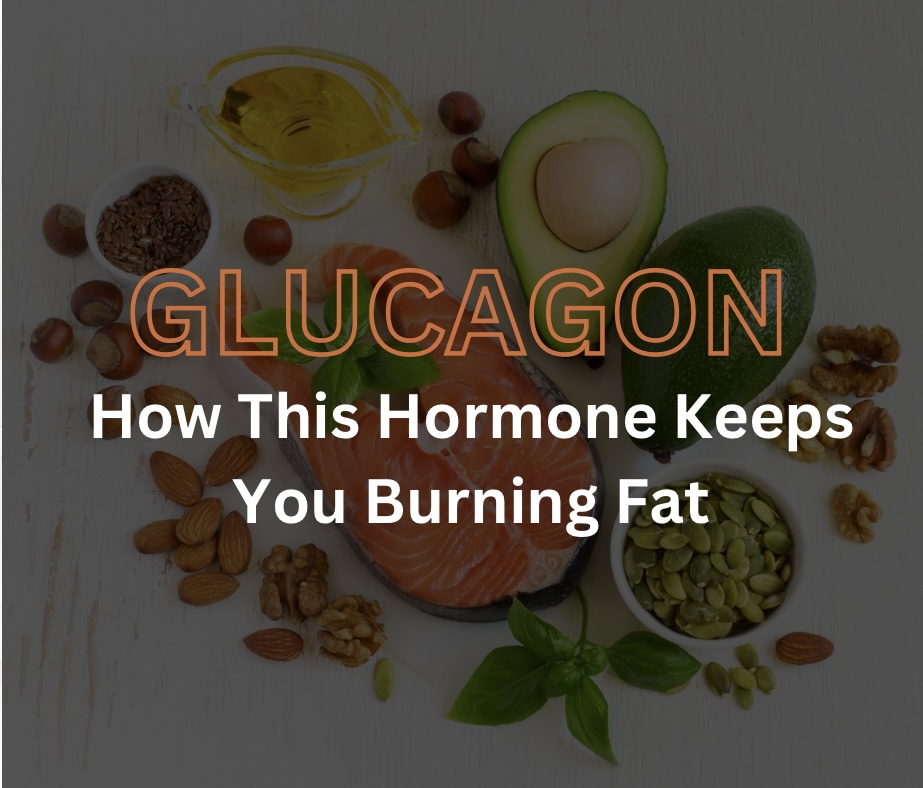Glucagon – The Role This Powerful Hormone Plays in Fat Burning
Glucagon is a hormone secreted by the pancreas, much like insulin. The key difference is that glucagon is released when blood sugar levels are low, while insulin is released when blood sugar levels rise. This makes glucagon essential for fat burning, as it helps release stored body fat to be used as energy (fuel) when blood sugar is low.
The amount of glucagon released in your body depends on what you eat. For instance, eating a high-carbohydrate meal will prompt your body to release insulin (a storage hormone), which minimises glucagon release. This insulin surge helps your body process and store the carbohydrates you’ve ingested, directing them to muscle cells or the liver if needed, or storing them as body fat if they aren’t immediately required.
Every time you move, exert energy, or contract your muscles, you burn calories. Whether your body burns fat, stored glycogen, or muscle tissue depends on your dietary habits.
Example Meal Plans to Promote Glucagon Release
To encourage glucagon release and support fat loss, choose meals that are high in protein and healthy fats, and low in processed carbs. Here are some examples:
– Breakfast: A high-protein, low-carb option like scrambled eggs with spinach and avocado. Avoid high-carb choices like bagels or sugary cereals, which trigger insulin release.
– Lunch: Grilled chicken breast with a large salad, including leafy greens, bell peppers, and olive oil dressing. Stick to low-carb vegetables and healthy fats to keep blood sugar steady.
– Snack: A handful of almonds or Greek yogurt without added sugar. These options are rich in protein and healthy fats, which don’t cause a big insulin spike.
– Dinner: Salmon with roasted broccoli and cauliflower. Fatty fish like salmon provides healthy fats and, along with low-carb veggies, encourages glucagon release.
Meal Timing Examples Around Workouts
Timing your meals around workouts is another strategy to optimise glucagon and insulin levels.
– Pre-Workout Meal (1–2 hours before): A balanced meal with protein, carbs, and fats, like a small portion of chicken with sweet potato and a handful of nuts, provides energy for your workout without spiking insulin too high.
– Post-Workout Meal (within 1 hour after): Focus on protein and carbs, such as a protein shake with a banana. After workouts, your body is more insulin-sensitive, so carbs are more likely to go toward muscle recovery rather than fat storage.
Low-Carb vs. High-Carb Days for Strategic Glucagon and Insulin Management
Managing your carb intake strategically can help with glucagon and insulin balance:
– On Rest Days: Opt for lower-carb meals focused on lean proteins, healthy fats, and fibrous vegetables. This will minimize insulin release and keep glucagon active, promoting fat burning.
– On Workout Days: Include a moderate amount of carbs, such as brown rice or quinoa with lunch or dinner, to replenish muscle glycogen and support recovery without excessive insulin release.
Simple Swaps for Everyday Choices
Here are some easy food swaps to minimise insulin and maximise glucagon release:
– Instead of: A sandwich with white bread (high-carb), choose a lettuce wrap with turkey and avocado (low-carb).
– Instead of: Pasta (which can spike insulin), try zucchini noodles with marinara and ground turkey or lean beef.
– Instead of: Fruit juice (high in sugar), go for infused water with lemon or cucumber, which doesn’t impact blood sugar.
Sample Fat-Burning Daily Schedule
Here’s an example schedule to help maximise glucagon release and fat burning:
– Morning (fasted state): Do a light cardio session (like a brisk walk) to promote fat burning while glucagon is active from fasting overnight.
– Midday: Eat a balanced lunch with lean protein and low-glycemic vegetables.
– Afternoon Snack: Opt for protein and healthy fats, like cottage cheese or hummus with cucumber slices.
– Evening: After a workout, eat a protein-rich dinner with some carbs to replenish glycogen for muscle recovery.
Tips to Maximise Fat Burning
1. Eat Frequently
Keep your body fuelled with regular food intake. A lean body thrives on frequent eating. On the other hand, a diet with a severe calorie deficit may lead to weight gain in the long run as your body shifts into storage mode.
2. Burn More Calories
Stick to a consistent routine that includes daily training, whether weight-bearing, cardiovascular, or a mix of both. Challenge yourself continuously to keep progressing.
3. Encourage Fat Burning Over Sugar
Keeping blood sugar levels stable during most of the day, except when you’re active (like during workouts), helps your body burn fat instead of storing it.
4. Choose Simple Foods
Stick with single-ingredient, fresh foods that are easier for your body to process. For example, chicken breast contains only chicken, while processed foods like bread contain numerous additives. Add fresh herbs and spices to keep flavours interesting.
5. Build a Positive Mental Attitude
As you implement these practices and see results, you’ll build self-belief and motivation. This mindset keeps you consistent and committed to your goals.
Summary
Glucagon plays a crucial role in helping the body burn stored fat as fuel when blood sugar is low. By making strategic choices in your diet and exercise routine, you can optimise glucagon release and support your fat-loss goals.
